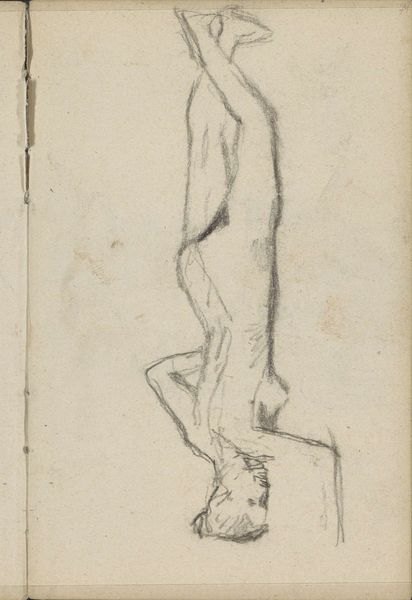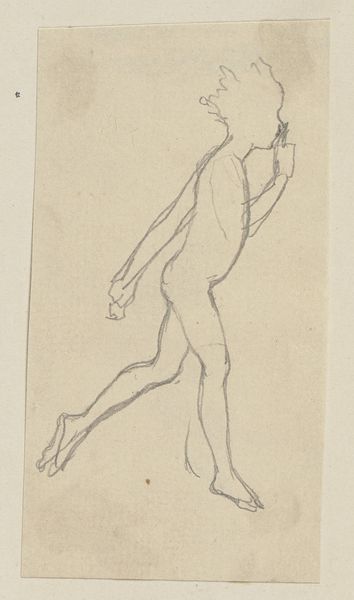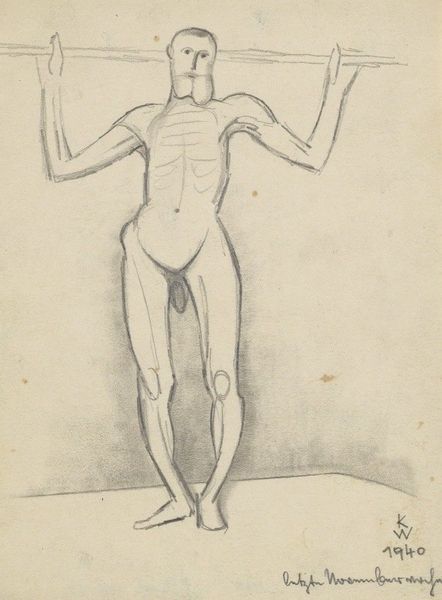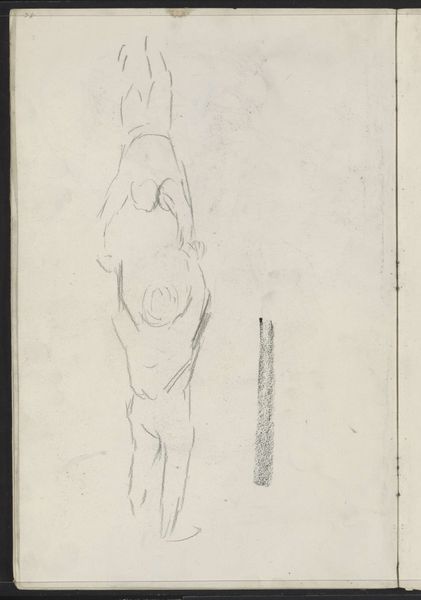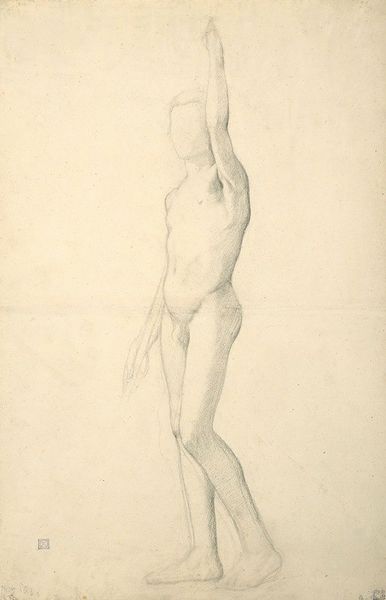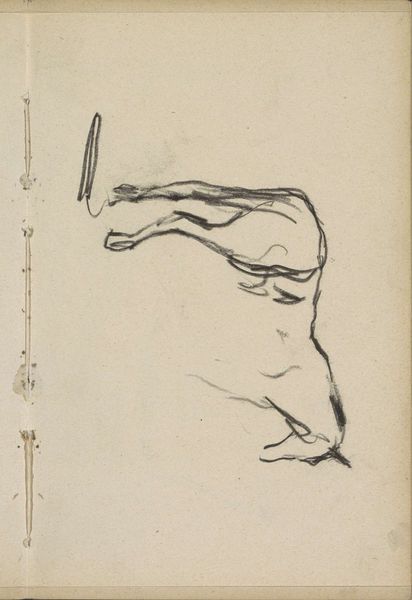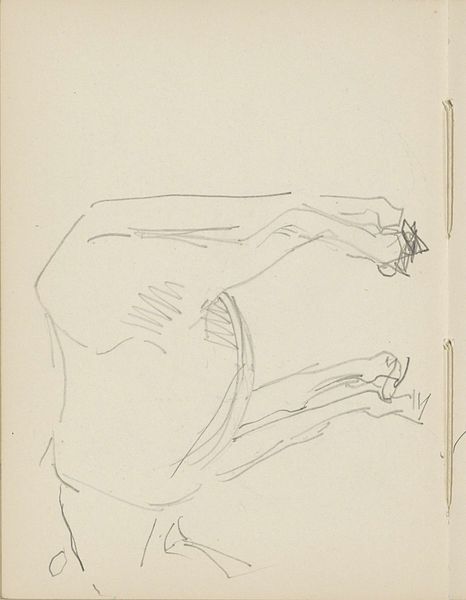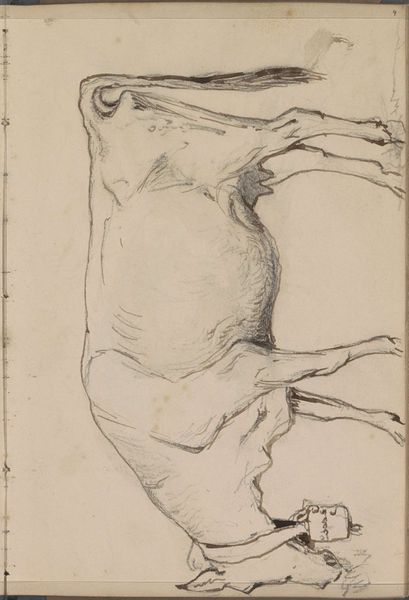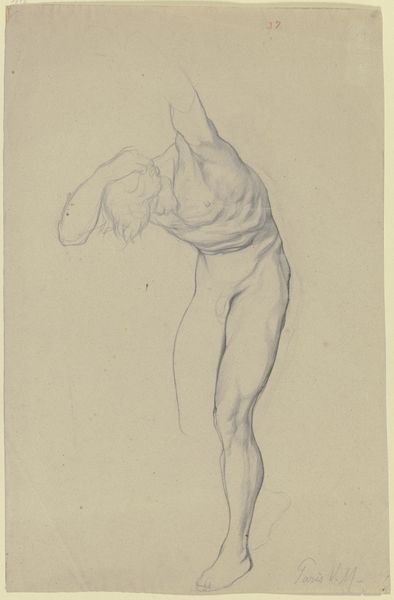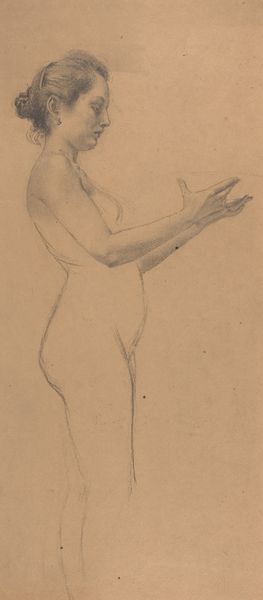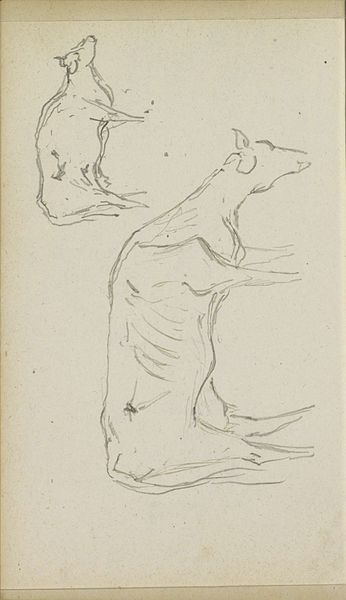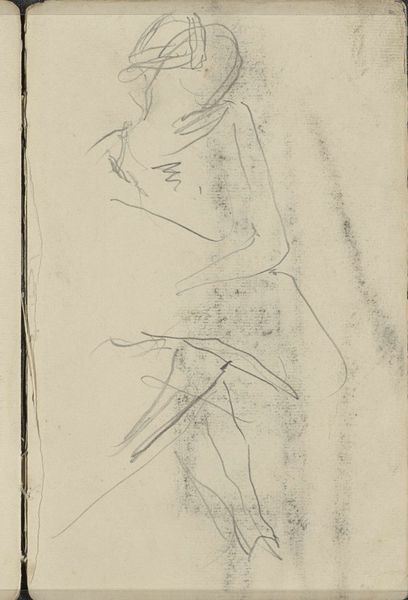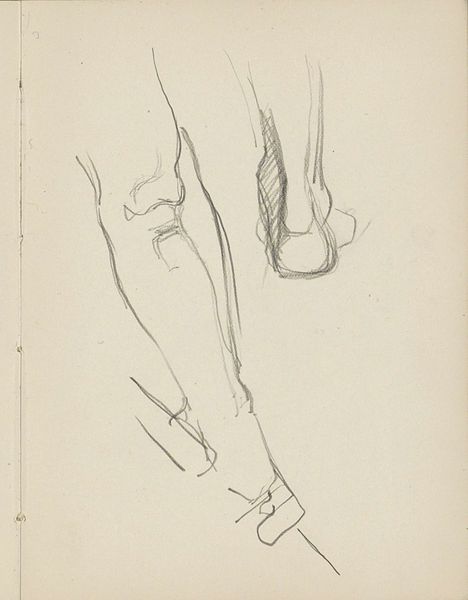
drawing, paper, pencil
#
drawing
#
pencil sketch
#
landscape
#
figuration
#
paper
#
pencil
#
genre-painting
#
realism
Copyright: Rijks Museum: Open Domain
Curator: Standing here, I feel this piece almost hums with quiet observation. It’s Johannes Tavenraat's "Cow, Seen from the Side," dating from after 1854. He captured it with a simple pencil on paper. Editor: There's a certain vulnerability in its depiction, isn’t there? This isn’t the romanticized, pastoral cow; this feels like a creature observed in its own time, within a social structure where its purpose is largely functional, even exploitative. Curator: I completely agree! I find something genuinely beautiful in its simple honesty, the lines almost caressing the shape of the animal. You know, I can almost smell the grass, hear the gentle moo, just from the way he sketched the muscles rippling beneath the skin. Editor: But it’s also interesting to consider this realism as a statement against the prevailing artistic trends of the time, often characterized by idealized representations. Think of it: an era wrestling with industrialization, urbanization, and Tavenraat chooses to focus on an agricultural, working animal. What is he saying about labor, about value? Curator: I never considered the urban and rural elements to this drawing. Absolutely! He immortalizes the cow in all its mundane glory; perhaps that's the real revolution in his approach, and maybe even, the subtle art of everyday resistance! Editor: I wonder, too, about its display. The cow, like other animals, is always “on display” whether in farms, markets, or even laboratories; made hypervisible for human benefit. So where in this Museum, might a drawing like this disrupt or reinforce such ways of seeing? Curator: These connections help me think that everything around me—nature, society, everything!—is, after all, in a single body, interconnected and communicative. It also makes me reconsider where to eat for lunch. Editor: Yes! The deceptively simple image ends up holding such vast conversations, both about its historical moment, but more powerfully, how it impacts our perception today.
Comments
No comments
Be the first to comment and join the conversation on the ultimate creative platform.
